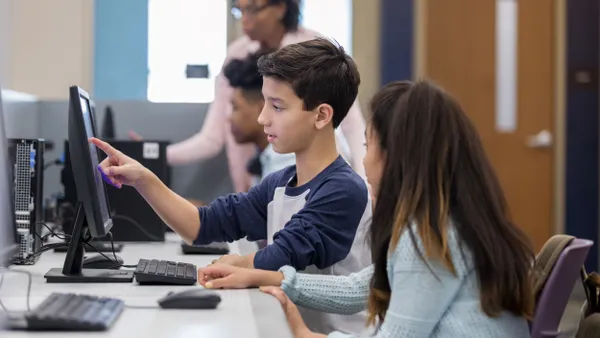Dive Brief:
-
Personalized learning has taken a front seat in recent conversations about improving classroom education. But a group of Minnesota elementary school teachers have been catering lessons to students’ unique needs for years, The Hechinger Report notes.
-
In 2011, teachers from Orchard Lake Elementary School noticed that the benchmark- and test score-centered system ignored individual students’ differences and limited creativity. Their solution: Impact Academy, where students were assigned to a K-5 community that let each child move at his or her own pace.
-
In this program, all students had reading and math at the same time, but each was put into the group that was the right fit for them, according to the article. After that, they moved faster or slower, depending on which concepts they mastered quickly and which they needed more time to study. The program, which ran as a pilot in Orchard Lake in the fall of 2013, has since spread to math classes three other Minnesota elementary schools.
Dive Insight:
For decades, most schools have operated under a system in which students are expected to move in lock step through the curriculum, their courses and grade levels. But the recent movement toward personalized learning shows that education leaders and policymakers are accepting the idea that one size does not fit all with students’ education. Studies have shown that online, personalized learning can boost students’ math and reading skills, and benefits like these have pushed public, private and charter schools to find new ways to tailor lessons to students, rather than the other way around.
Orchard Lake’s system seemed to work well for its teachers and students. But other schools looking to adopt a personalized learning model can use their discretion in figuring out the setup that works for them. Some places to start: alternative classroom design and redefining teacher roles and technology are among educators’ attempts to implement more personalized strategies.
That’s not to say that introducing a personalized approach is easy or a guaranteed win. Administrators have to be proactive and flexible as classrooms adjust to growing pains, and collaboration among teachers and staff members is part of a recipe for a successful personalized learning program. But even then, these strategies are not always enough — a school district in California stopped using personalized learning after struggling with technical issues and unhappy parents.
Setting up a personalized learning program takes time and patience from school leaders. But based on the many districts that now have multiple years of experience, school leaders have plenty of models and an increasing body of research to guide them.










